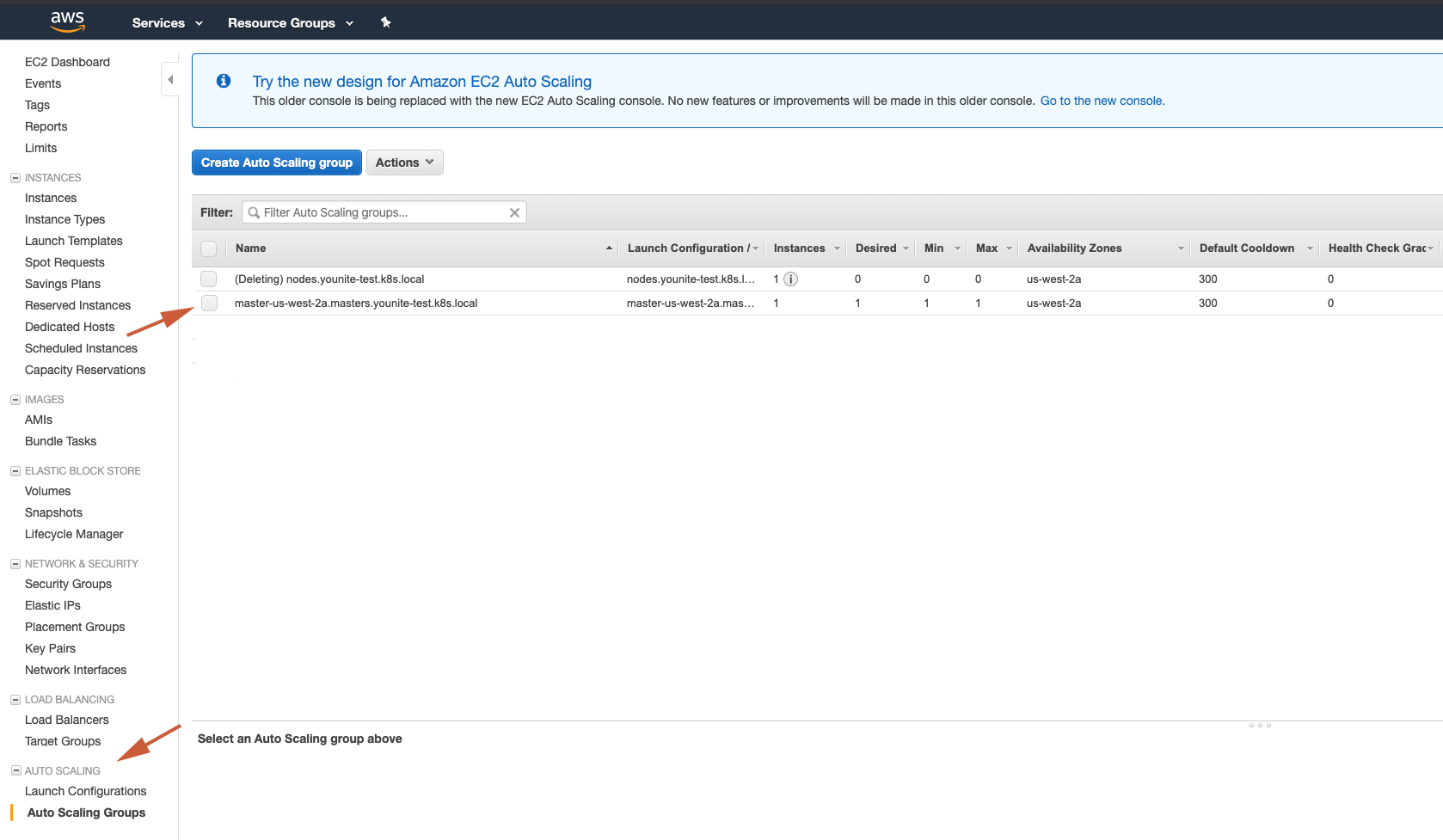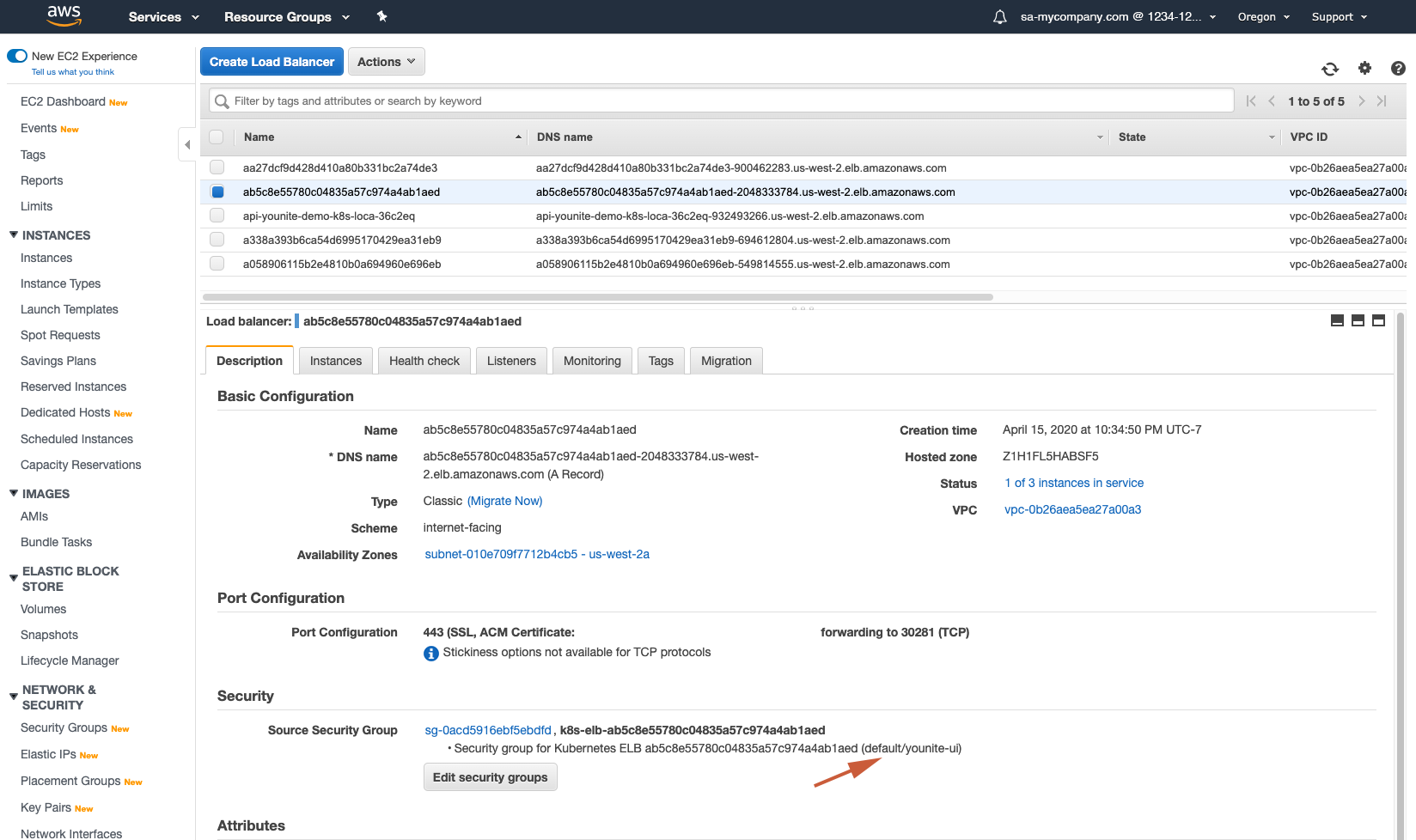Follow these steps to uninstall or restart your YOUnite Cluster using Docker and Kubernetes inside of your Amazon Web Services (AWS) account.
Requirements
-
You will need the tools and environment variables covered in the AWS Deployment Configuration guide.
-
Make sure you are logged in as the appropriate
Cluster Administrator
aws iam get-userUpdating the YOUnite Cluster Configuration
If changes are required for one of the YOUnite services, change directories to the cluster_config directory and update the appropriate YAML deployment file(s) or the cluster-props.env file and apply it to the cluster.
For example to update the database configuration:
vi younite-db-deployment.yamlSave changes and then run the apply.sh script:
./apply.shDelete the Password From the Registry
kubectl delete secret younite-registrySuspend the Cluster
kops edit ig --name $KOPS_CLUSTER_NAME nodesSet both the spec maxSize and minSize to 0.
Update the cluster:
kops update cluster --yesRestart the Cluster
First Suspend the Cluster. Then:
kops edit ig --name $KOPS_CLUSTER_NAME nodesSet both the spec maxSize and minSize to 3 (or larger)
Update the cluster:
kops update cluster --yesDelete the Cluster
First suspend the cluster (see above).
kops delete cluster --state=$KOPS_STATE_STORE --yes(it typically makes several retries to deleting resources)
Remove the S3 Bucket
Deleting the cluster should remove its S3 bucket. To be safe check if the S3 bucket exists:
aws s3 ls $KOPS_STATE_STOREIf it exists, then remove it:
aws s3 rb $KOPS_STATE_STORE --forceIn Case There is a Versioning Error
By default, bucket versioning is turned off when a bucket is created. If versioning is turned on for the above bucket, then:
-
login to the AWS Management Console
-
In the upper left corner, select
US East (N. Virginia)us-east-1 -
Navigate to the S3 Dashboard. and remove the bucket - you will get prompted to confirm the deletion.
Validate Your Cluster Has Shutdown
Accessing the URL to the Kubernetes dashboard should return a NOT FOUND response.
Also, login to your AWS console and check if there are any:
-
Running instances containing the cluster’s name e.g.
younite-api(make sure you have the correct region selected in the upper right pulldown).If you try to terminate them and they restart, then the
Auto Scaling groupneeds to be removed. Navigate to theAuto Scaling Groupspage and delete the two groups associated with the cluster:
Got back to the
ec2screen and terminate the instances associated with the cluster you are terminating. -
From the
ec2dashboard, validate that all load balancers associated with the cluster are terminated. You can identify YOUnite cluster load balancers by looking at the name associated with the load balancersSource Security Group: